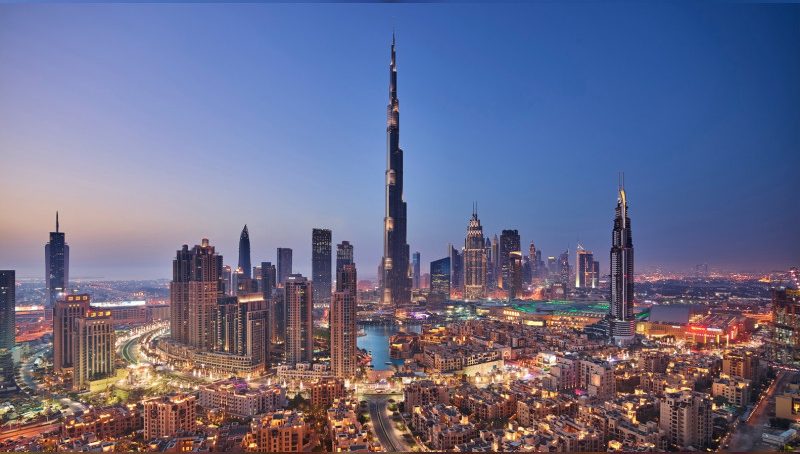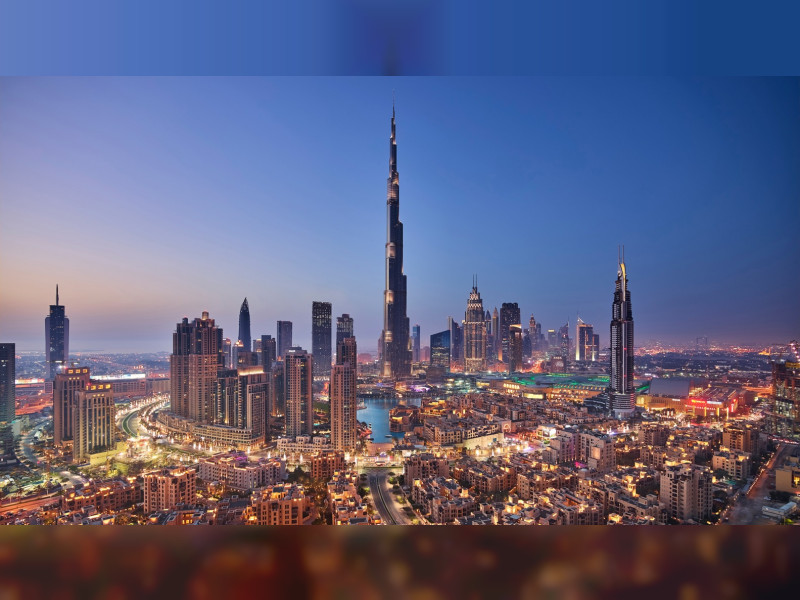
 Dubai welcomed 8.36 million international overnight visitors in the first six months (January-June) of 2019, posting a three percent year-on-year growth, according to the latest data released by Dubai’s Department of Tourism and Commerce Marketing.
Dubai welcomed 8.36 million international overnight visitors in the first six months (January-June) of 2019, posting a three percent year-on-year growth, according to the latest data released by Dubai’s Department of Tourism and Commerce Marketing.
The new figures solidify the continued strength of Dubai’s tourism sector as a key driver of economic diversification and a reliable catalyst for GDP acceleration through 2020. The largest traffic generators as well as newer high-potential segments have set a strong preparatory pace to fuel Dubai’s climb to becoming the most visited global destination.
India led the pack, drawing the highest half year volumes with 997,000 visitors – particularly noteworthy given the severe air traffic and seat capacity challenges due to geopolitical volatilities.
Saudi tourists came second with over 750,000 visitors. With the GCC as a whole, and KSA (as its lead contributor), being key priorities on Dubai Tourism’s strategic agenda, investments in deepening alliances with the country’s travel ecosystem continued to increase in H1 2019, reflecting the value of such partnerships – particularly via consolidated marketing-promotions-sales programmes. In addition to the planned calendar of specialized fam trips for KSA’s top travel agents and tour operators, showcasing the latest and most relevant Dubai offering to help them develop tailor-made itineraries for their audiences, Dubai Tourism entered into a long-term association with the Seera Group, one of the region’s leading providers of travel services in the Middle East and North Africa.
The UK came third and delivered 586,000 travelers beating all odds against a significantly devalued British Pound (vs. US Dollar), amidst growing political and economic turbulence surrounding Brexit. With over 501,000 Chinese visitors to Dubai from January to June 2019, the stellar 11 percent year-on-year growth from unarguably the world’s most aggressively sought-after consumers is testament to Dubai Tourism’s successful strategies to maintain high conversion appeal for China’s outbound market. Building on its proven three-pronged approach, 2019 saw Dubai Tourism actively pursue enhancements across all aspects – (i) ‘direct-to-consumer’ platform-based awareness program; (ii) customized trip-planning supplemented by advocacy-driven collaborations; (iii) in-city experience and China Readiness delivery.
With the support of visionary leadership, Dubai continues to make bold moves to promote accelerated growth of the tourism sector. Streamlining access to the emirate by establishing hassle-free entry procedures continues to be a top priority for Dubai Tourism. The recent nationwide implementation of a tourist visa fee waiver for children under 18 years of age, who are accompanied by their parents, has augmented Dubai’s position as a leading family-friendly tourism destination.
In the first six months of 2019, the city continued to focus on providing its residents and tourists a plethora of first-class entertainment offerings and attractions, including the opening of the region’s largest multipurpose indoor entertainment center, the Coca-Cola Arena. With a capacity to hold 17,000 visitors, the arena offers a year-round program of events including sporting tournaments, e-gaming, theater and musical performances, conferences and gala dinners.
Designed to give diverse international audiences a holistic understanding of the city’s Islamic heritage, the recently opened Quranic Park is a comprehensive and immersive cultural and educational experience unique to the region. The park spans over 60-hectares with two main attractions, The Glass House and The Cave of Miracles. Visitors have the opportunity to experience more attractions citywide across theme parks and other family entertainment centers, as Dubai continues to invest heavily in tourism infrastructure and facilities, as well as mega development and retail projects.
Dubai’s hotel sector continues to be integral to the emirate’s destination promise and to the overall growth of the tourism industry, delivering best-in-class quality and standards on par with top hotels in other leading world cities and an increased diversity in its portfolio, offering tourists more choices to meet the needs of their diverse traveler profiles.
Between January and June 2019, further strides were made to expand Dubai’s hospitality offering to match the evolving needs of visitors, with the opening of new hotels including Waldorf Astoria Dubai International Financial Centre, W Hotel Palm Jumeirah, Studio One Hotel, Rove at the Park at Dubai Parks and Resorts, Premier Inn Hotel Al Jadaf and Vida Emirates Hills adding to the city’s portfolio of world-class facilities and amenities.
Average occupancy for the hotel sector stood at 76 percent – one of the highest hotel sector occupancies in the world – with establishments delivering a combined 15.71 million occupied room nights during the first six months of the year, a five percent increase over the same period in 2018.
Spread across a total of 714 establishments, Dubai’s hotel room inventory stood at 118,345 at the end of June 2019, representing a six percent increase, which showcased continued strong investor confidence in Dubai’s tourism demand and market appetite. This healthy correlation between supply and global demand also resonates with the steady rise in the number of visitors opting to stay in hotels, indicating that not only is the inventory keeping pace in volume but also in product diversity – evolving competitively across different tiers to allow for a more aligned asset mix offering custom services that can appeal to highly divergent needs of Dubai’s global audience.
Luxury five-star and four-star hotels commanded 34 and 25 percent of the emirate’s total inventory, respectively. Meanwhile properties in the one to three-star categories represented a share of 20 per cent. Increasing demand for diversified accommodation options was met with a combined 21 per cent of hotel apartment establishments across the deluxe/superior and standard categories.
Add to Favorites
















